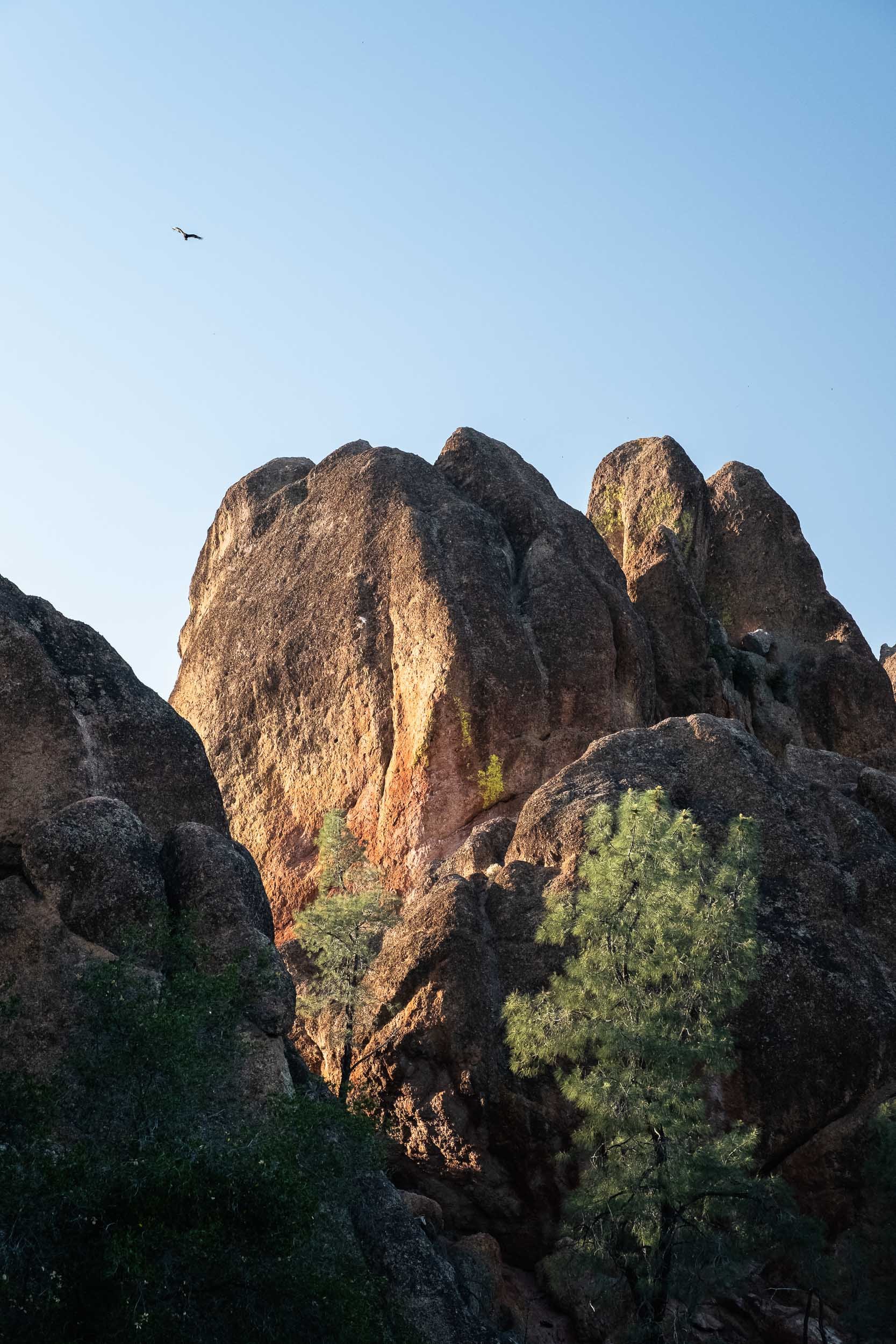
Visited April 2022
Pinnacles National Park
Visiting Pinnacles National Park had been on my radar for a few years. It’s (relatively) close to San Francisco, so it makes a nice side trip if you find yourself out that way. What had been holding me back on previous trips to the Bay Area, was the season and the weather. Pinnacles gets reallllll hot in the summer. I’m not much of a hot weather person (80 degrees and above), so my ideal visitation months are between November-April.
So what a gift to have a conference in San Francisco in April! That enabled me to visit the park in early April, and surprise, heat wave! Normal temps in April are highs of 72 and lows of 39, which made packing 2 pairs of hiking pants and a pair of zip-off pants (classic) a no brainer. Well, the surprise heat wave gave me temps of 98 degrees at 3pm! And here is where some crucial travel and hiking experience comes in: DO NOT embark on a big hike in high heat, especially when there is no shade like the west side Pinnacles. This is a bad combination. Since I’d been in this situation before, I was prepared: several Netflix episodes downloaded on my iPad and I could chill in my car’s A/C waiting for the sun to drop. And you laughed a few sentences back about my zip offs, but let me tell ya they really came in handy here! My first hour of hiking was then in the low 90’s, but the sun dropped quickly, and I made it to the other side of the peaks which then had nice shade.
Pinnacles ended up being about what I expected of the park. Was it worth visiting? For sure. Was the two days I spent there enough to see everything in the park I wanted to see? Definitely. Many times when I visit a little-known National Park, I think to myself “I can’t wait to come back!”. This was not one of those parks, but I’m glad I went.
A couple fun facts about Pinnacles: 1. This is a big climbing destination (both bouldering and single/multi-pitch). The rock is volcanic breccia, which provides for excellent grip, but is also easy to break off. 2. There are two talus caves (caves formed by boulders falling into ravines, so the “ceiling” is a bunch of boulders and not single rock), that are home to bats (at least 13 species of bats in the park). If you’ve ever been wandering in nature at night and gotten buzzed by a bat, you’ll know the terrifying feeling. 3. This park is a release site for the California condor, which almost went extinct but is rebounding (although numbers are still small). If you want to see a California condor, this is the best place to do it. However, the park is also FILLED with turkey vultures, which look similar from afar, so make sure you know your birds!































